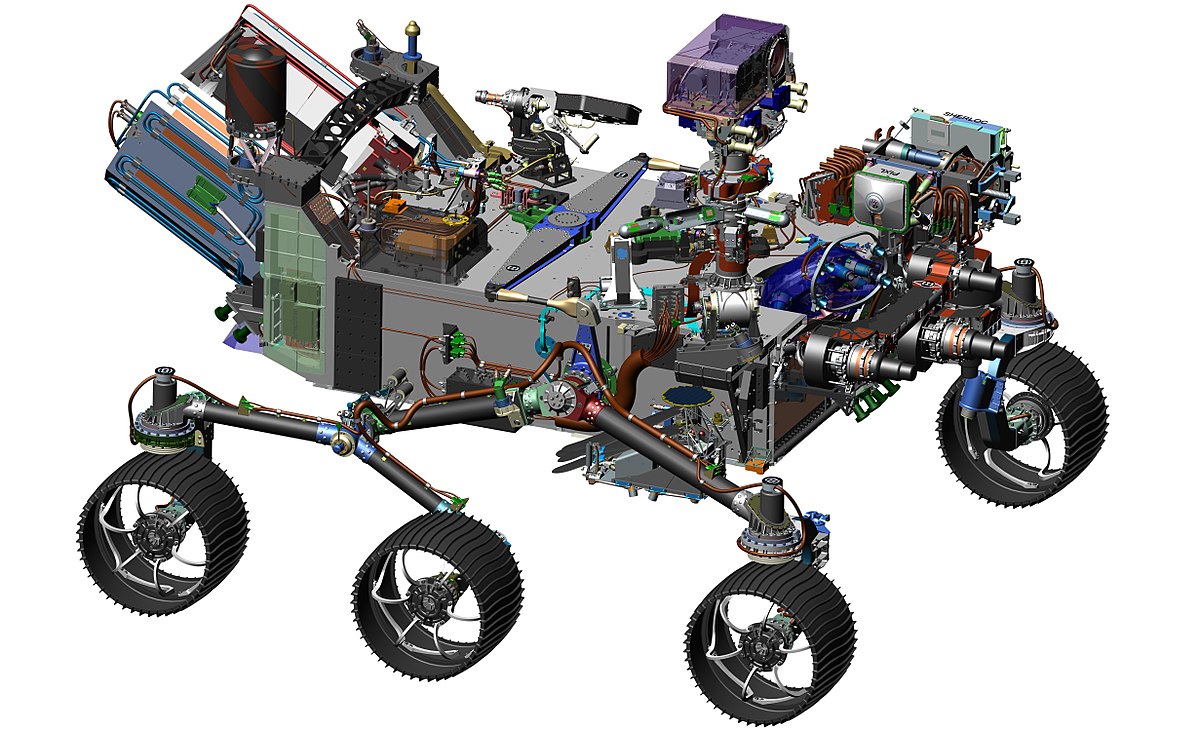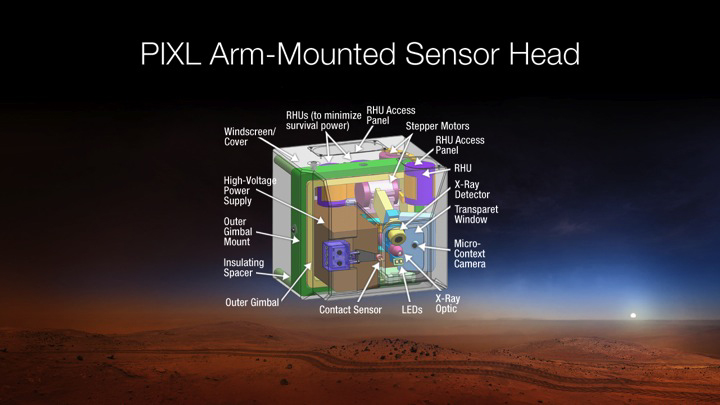Mars 2020 will record a three-dimensional video of its landing

NASA’s fifth rover named the Mars 2020 will receive excellent technical equipment. Its main difference from its predecessors is a large number of cameras , there will be 23 at once. The cameras will fix the entire process of the probe landing on the surface of the Red Planet.
“Those cameras that are installed on Curiosity allow you to take selfies and panoramic photos due to the bonding of images. New lenses and cameras of the new Mars rover make it possible to get such photos right away, without gluing, ”said Colin McKinney from the NASA Jet Propulsion Laboratory. The agency announced its intention to create a new generation rover back in 2012. The news came at an autumn meeting of the American Geographic Union in San Francisco.
The basis of the Mars 2020 design is the Curiosity mobile platform. Modified and modified, but still this is the basis of the old rover. This is done so as not to “reinvent the wheel” - the mobile platform of the previous device just showed itself perfectly. Developing a base from scratch would take a lot of time and money, and NASA would be able to save. By the way, the cost of Curiosity amounted to about $ 2.5 billion, which is quite a lot, especially when you consider that the initial project was estimated at $ 800 million.
But this only applies to the platform, the equipment is installed new. Two years after NASA announced the new rover, the agency received 58 proposals from researchers and engineers from around the world. Some of these proposals have been approved. Then the representatives of the rover team chose seven devices.
The main purpose of the system is to search for traces of life in the past of Mars. 23 cameras will be installed for a reason: scientists focus on visual analysis. Seven cameras from the set are scientific instruments, nine serve as navigation systems, and seven more are specialized cameras that will record the descent of the rover, starting from the entrance to the atmosphere and ending with contact with the Martian surface.
By the way, Curiosity is also equipped not bad, it has 17 cameras at once. Spirit and Opportunity have only 10 cameras each. Another important innovation is the presence of a microphone. Almost all the rovers that were on the Earth’s neighbor before that were “deaf”. Mars 2020 is finally “hearing.”

Mars rover equipment:
- Mastcam-Z is a universal system of two cameras with panoramic and stereoscopic displays and a variable focal length lens. This scientific instrument will be able to determine the mineralogical composition of Martian soil;
- SuperCam is a tool for determining the chemical and mineralogical composition of Mars soil. The same device allows you to detect at a distance the presence of organic compounds in rocks and regolith;
- Planetary Instrument for X-ray Lithochemistry (PIXL) is an X-ray fluorimetric spectrometer combined with a high-resolution thermal imager. It is needed in order to determine the composition of the Martian soil by rare elements. PIXL allows you to clarify the elemental composition of Martian soil - this could not be done before;
- Scanning Habitable Environments with Raman & Luminescence for Organics and Chemicals (SHERLOC) is an ultraviolet Raman spectrometer that provides the ability to obtain the smallest images in order to determine small-scale mineralogy and detect organic matter if any. SHERLOC - the first ultraviolet spectrometer on the surface of Mars;
- Mars Oxygen ISRU Experiment (MOXIE) - the latest experimental tool that will produce oxygen from the atmosphere of Mars, consisting of carbon dioxide;
- Mars Environmental Dynamics Analyzer (MEDA) - a set of sensors that are designed to measure temperature, wind speed and direction, pressure, relative humidity, dust size and shape;
- Radar Imager for Mars Subsurface Exploration (RIMFAX) - GPR, which probes the geological structure of the subsoil with a resolution of only one centimeter.
The rover wheels will be better protected than Curiosity so that they are less damaged by the hard minerals found on the rover.
